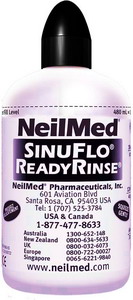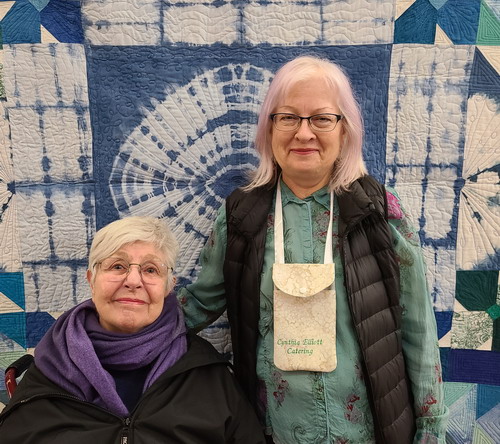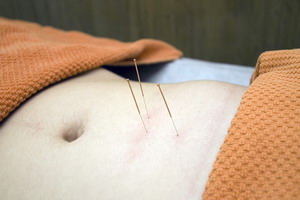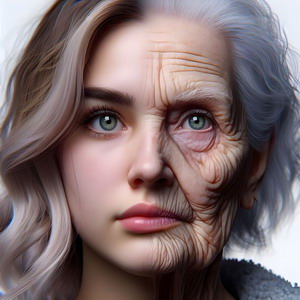 Sinuses are kind of weird. An hour-long check of about 30 websites writing about sinuses shows an amazing lack of understanding about the purpose of our sinuses. The general consensus is that we are not sure what the sinuses are for. The conjecture is that they are there to humidify the air coming into the lungs, to lighten the skull, to improve our voice and make it more resonant, and to produce mucus to lubricate the nose. These answers seem made up to me. If our lungs really need humidified air then why can we breathe through our mouth which does not humidify our air? The body has lots of places where it makes bones lighter by creating cavities, but none of those areas are open to the outer world. What is the evolutionary pressure for us to have lovely resonant voices? Did Mother Nature anticipate Hollywood and radio broadcasting as a reproductive pressure where a good radio voice made you a better mate? And the last one, really? Do we need sinuses to make mucus for the sinuses?
Sinuses are kind of weird. An hour-long check of about 30 websites writing about sinuses shows an amazing lack of understanding about the purpose of our sinuses. The general consensus is that we are not sure what the sinuses are for. The conjecture is that they are there to humidify the air coming into the lungs, to lighten the skull, to improve our voice and make it more resonant, and to produce mucus to lubricate the nose. These answers seem made up to me. If our lungs really need humidified air then why can we breathe through our mouth which does not humidify our air? The body has lots of places where it makes bones lighter by creating cavities, but none of those areas are open to the outer world. What is the evolutionary pressure for us to have lovely resonant voices? Did Mother Nature anticipate Hollywood and radio broadcasting as a reproductive pressure where a good radio voice made you a better mate? And the last one, really? Do we need sinuses to make mucus for the sinuses?
 We need to look a little deeper and not be satisfied with the shared soundbite reality of the internet. Let’s look at some interesting information bits I have collected over the years about sinuses. One recent piece I picked up is a condition called Empty Nose Syndrome, a condition some patients experience after nasal turbinate surgery. One of the feelings it produces is a feeling that you can’t get enough air in and that you are suffocating. The airways are perfectly clear, but the symptoms are similar to hyperventilating. The turbinate bones in the middle of the nose direct the airflow much like the banks of a river direct the flow of the water. And just as in a river, a straight flow path actually creates a great deal of turbulence while a twisty path, like a river naturally makes, produces a smooth laminar flow that moves faster. It appears this disrupts the oxygen/CO2 balance in the body. Your CO2 levels in your body control the openness of the blood vessels everywhere in your body. To a point, more CO2 is better – it opens up your blood flow. It is more important than nitric oxide.
We need to look a little deeper and not be satisfied with the shared soundbite reality of the internet. Let’s look at some interesting information bits I have collected over the years about sinuses. One recent piece I picked up is a condition called Empty Nose Syndrome, a condition some patients experience after nasal turbinate surgery. One of the feelings it produces is a feeling that you can’t get enough air in and that you are suffocating. The airways are perfectly clear, but the symptoms are similar to hyperventilating. The turbinate bones in the middle of the nose direct the airflow much like the banks of a river direct the flow of the water. And just as in a river, a straight flow path actually creates a great deal of turbulence while a twisty path, like a river naturally makes, produces a smooth laminar flow that moves faster. It appears this disrupts the oxygen/CO2 balance in the body. Your CO2 levels in your body control the openness of the blood vessels everywhere in your body. To a point, more CO2 is better – it opens up your blood flow. It is more important than nitric oxide.
 Something as tiny as the inner shape of your sinuses can have a massive impact on your health. Another point I learned many years ago is that the blood flow in your sinuses is different from left to right, and it constantly shifts back and forth. About every 20 minutes in a healthy person the blood flow increases in one side and decreases in the other. The research this came from was looking at changes in brain processing from left to right hemispheres. The sinuses were believed to help cool the brain, and the sinus air flow would match the side of the brain that was more active. This demonstrates another function of the sinuses.
Something as tiny as the inner shape of your sinuses can have a massive impact on your health. Another point I learned many years ago is that the blood flow in your sinuses is different from left to right, and it constantly shifts back and forth. About every 20 minutes in a healthy person the blood flow increases in one side and decreases in the other. The research this came from was looking at changes in brain processing from left to right hemispheres. The sinuses were believed to help cool the brain, and the sinus air flow would match the side of the brain that was more active. This demonstrates another function of the sinuses.
 Up until a few years ago, it was believed that the brain was completely isolated from the outside world by the blood-brain barrier. But then it was discovered that a tiny patch in the back of the sinus had no isolating barrier allowing the brain to directly sample and access the outer world via what was in the air. This is a bad thing if you have a sinus infection as it leaves a way for bacteria to enter the brain. But it gives the brain a way to “feel” what is in the air beyond just the smell of things. The brain can anticipate body needs in response to various bacteria, fungi, and viruses present in air samples. Certain immune functions seem to be tied to this sinus function.
Up until a few years ago, it was believed that the brain was completely isolated from the outside world by the blood-brain barrier. But then it was discovered that a tiny patch in the back of the sinus had no isolating barrier allowing the brain to directly sample and access the outer world via what was in the air. This is a bad thing if you have a sinus infection as it leaves a way for bacteria to enter the brain. But it gives the brain a way to “feel” what is in the air beyond just the smell of things. The brain can anticipate body needs in response to various bacteria, fungi, and viruses present in air samples. Certain immune functions seem to be tied to this sinus function.
 Along these same lines, we want to look at all that mucus the sinuses produce. The common belief is that this is just to moisturize the nasal passages. But if so, why is it so sticky and thick? Our eyes and mouth need similar moisturizing and they do just fine with a very watery secretion. This next perspective is more speculative as no rigorous research has looked into it. But throughout the rest of the digestive tract mucus is formed to create a barrier that traps bacteria in it to protect the lining of the GI tract. The hairs in the nose act to trap bacteria, fungi, and viruses as well as other air-borne items like pollen. But unlike the rest of the digestive tract, the sinus mucus takes all this trapped stuff and drains it down our throat. Maybe this is just to keep things clear as we do not have peristaltic movements to move things along in the nose. However, some researchers speculate that this is another air sampling process that then presents these particulates to the immune cells in our gut to be identified and responded to. There is a lot more going on in the sinuses than we are told.
Along these same lines, we want to look at all that mucus the sinuses produce. The common belief is that this is just to moisturize the nasal passages. But if so, why is it so sticky and thick? Our eyes and mouth need similar moisturizing and they do just fine with a very watery secretion. This next perspective is more speculative as no rigorous research has looked into it. But throughout the rest of the digestive tract mucus is formed to create a barrier that traps bacteria in it to protect the lining of the GI tract. The hairs in the nose act to trap bacteria, fungi, and viruses as well as other air-borne items like pollen. But unlike the rest of the digestive tract, the sinus mucus takes all this trapped stuff and drains it down our throat. Maybe this is just to keep things clear as we do not have peristaltic movements to move things along in the nose. However, some researchers speculate that this is another air sampling process that then presents these particulates to the immune cells in our gut to be identified and responded to. There is a lot more going on in the sinuses than we are told.
 But what can we do if our sinuses are not flowing freely? What if congestion has set in for some reason? I see a lot of patients who have some degree of restriction in breathing through their noses. In the office, I perform an adjustment to the cheekbones to open up the sinuses to some degree by spreading the maxillary arch outward. This is similar to what the sinus product called Breathe Right strips does by pulling the skin on either side of the nose outward.
But what can we do if our sinuses are not flowing freely? What if congestion has set in for some reason? I see a lot of patients who have some degree of restriction in breathing through their noses. In the office, I perform an adjustment to the cheekbones to open up the sinuses to some degree by spreading the maxillary arch outward. This is similar to what the sinus product called Breathe Right strips does by pulling the skin on either side of the nose outward.
The traditional medical advice is:
Steam inhalation
Hydration
Warm compresses
Nasal sprays
Sleep with head elevated (bad for the neck)
Nasal irrigation
Decongestants and antihistamines
Steroid drugs
 I prefer the use of nasal irrigation with some essential oils added to the salt that goes in the irrigator. My favorite type of nasal irrigator is the NeilMed. It is just a simple squeeze bottle with a nasal tip. A normal saline solution is recommended for minimizing irritation at about ½ tsp of salt per cup of solution. The essential oils would be to kill bacteria and fungus and soothe the inflamed tissue. Use only 1 to 2 drops of essential oil per use. Some folks have told me they like the mechanical nasal irrigators, but I have no experience with them. The traditional route is a neti pot, but it is a little more cumbersome.
I prefer the use of nasal irrigation with some essential oils added to the salt that goes in the irrigator. My favorite type of nasal irrigator is the NeilMed. It is just a simple squeeze bottle with a nasal tip. A normal saline solution is recommended for minimizing irritation at about ½ tsp of salt per cup of solution. The essential oils would be to kill bacteria and fungus and soothe the inflamed tissue. Use only 1 to 2 drops of essential oil per use. Some folks have told me they like the mechanical nasal irrigators, but I have no experience with them. The traditional route is a neti pot, but it is a little more cumbersome.
 Massage of the cheekbones beginning at the side of the nose and pushing outward towards the ears frequently opens up the sinuses. Massaging the neck from the jaw towards the collarbones helps to drain the lymphatics of the neck. A simple acupressure technique often opens the sinuses by pressing on the second cervical vertebra. Watch this video to see how to do this.
Massage of the cheekbones beginning at the side of the nose and pushing outward towards the ears frequently opens up the sinuses. Massaging the neck from the jaw towards the collarbones helps to drain the lymphatics of the neck. A simple acupressure technique often opens the sinuses by pressing on the second cervical vertebra. Watch this video to see how to do this.
 During my research into sinus congestion, I came across a radically different view of sinus congestion and how to relieve it. This concept relates to the mention I made earlier about CO2 and blood flow. The idea is to increase your CO2 levels while walking or swaying in your chair. The material looks sound, but I have not had a stuffy nose to try it on. Here is a YouTube link.
During my research into sinus congestion, I came across a radically different view of sinus congestion and how to relieve it. This concept relates to the mention I made earlier about CO2 and blood flow. The idea is to increase your CO2 levels while walking or swaying in your chair. The material looks sound, but I have not had a stuffy nose to try it on. Here is a YouTube link.
 The last treatment I want to cover is the use of nasal dilators. I have never tried these, but it looks like they work. These are just what the name sounds like – short tubes you stuff into your nose to open things up. The video is entertaining in a bizarre way if you like listening to British doctors talking about crusty boogers. Check it out here.
The last treatment I want to cover is the use of nasal dilators. I have never tried these, but it looks like they work. These are just what the name sounds like – short tubes you stuff into your nose to open things up. The video is entertaining in a bizarre way if you like listening to British doctors talking about crusty boogers. Check it out here.
I guess there is one obvious sinus treatment still to mention – blowing your nose.
This is because it is possible to blow your nose hard enough to force bacteria laden mucus up your Eustachian tube into your inner ear. This then sets you up for an ear infection. So don’t blow too hard. Only blow through one nostril at a time. Block one side and blow out the opposite side. From patient report, it seems everyone then checks out their mucus. Is it clear, is it white, is it yellow, is it green, is there blood? These seem to be the popular inquires. There is an old wives tale that if it is green then you have a bacterial infection. This is not true. The color is about how long the mucus has been hanging out exposed to the air.That is pretty much all I can think of regarding simple sinus issues. Allergies are a whole separate subject. Hopefully you don’t need any of this information, but truthfully most of us will have sinus issues somewhere along the line.
Take care,
David
Ellen
 A couple nights ago Ellen and I went to the big Quilt show in Folsom. We were invited by Amber and Cynthia Elliott who showed us around the show pointing out all the amazing features of the over 400 quilts on display. Here we see Ellen and Cynthia in front of one of Cynthia’s quilts. Of particular note with this quilt is that Cynthia tie dyed the indigo color into the fabric used herself.
A couple nights ago Ellen and I went to the big Quilt show in Folsom. We were invited by Amber and Cynthia Elliott who showed us around the show pointing out all the amazing features of the over 400 quilts on display. Here we see Ellen and Cynthia in front of one of Cynthia’s quilts. Of particular note with this quilt is that Cynthia tie dyed the indigo color into the fabric used herself.
 Acupuncture for post stroke language
Acupuncture for post stroke language
 Immune cells reprogramed for anti-aging
Immune cells reprogramed for anti-aging
 Why fats and sugars are so irresistible
Why fats and sugars are so irresistible

 Sinuses are kind of weird. An hour-long check of about 30 websites writing about sinuses shows an amazing lack of understanding about the purpose of our sinuses. The general consensus is that we are not sure what the sinuses are for. The conjecture is that they are there to humidify the air coming into the lungs, to lighten the skull, to improve our voice and make it more resonant, and to produce mucus to lubricate the nose. These answers seem made up to me. If our lungs really need humidified air then why can we breathe through our mouth which does not humidify our air? The body has lots of places where it makes bones lighter by creating cavities, but none of those areas are open to the outer world. What is the evolutionary pressure for us to have lovely resonant voices? Did Mother Nature anticipate Hollywood and radio broadcasting as a reproductive pressure where a good radio voice made you a better mate? And the last one, really? Do we need sinuses to make mucus for the sinuses?
Sinuses are kind of weird. An hour-long check of about 30 websites writing about sinuses shows an amazing lack of understanding about the purpose of our sinuses. The general consensus is that we are not sure what the sinuses are for. The conjecture is that they are there to humidify the air coming into the lungs, to lighten the skull, to improve our voice and make it more resonant, and to produce mucus to lubricate the nose. These answers seem made up to me. If our lungs really need humidified air then why can we breathe through our mouth which does not humidify our air? The body has lots of places where it makes bones lighter by creating cavities, but none of those areas are open to the outer world. What is the evolutionary pressure for us to have lovely resonant voices? Did Mother Nature anticipate Hollywood and radio broadcasting as a reproductive pressure where a good radio voice made you a better mate? And the last one, really? Do we need sinuses to make mucus for the sinuses? We need to look a little deeper and not be satisfied with the shared soundbite reality of the internet. Let’s look at some interesting information bits I have collected over the years about sinuses. One recent piece I picked up is a condition called Empty Nose Syndrome, a condition some patients experience after nasal turbinate surgery. One of the feelings it produces is a feeling that you can’t get enough air in and that you are suffocating. The airways are perfectly clear, but the symptoms are similar to hyperventilating. The turbinate bones in the middle of the nose direct the airflow much like the banks of a river direct the flow of the water. And just as in a river, a straight flow path actually creates a great deal of turbulence while a twisty path, like a river naturally makes, produces a smooth laminar flow that moves faster. It appears this disrupts the oxygen/CO2 balance in the body. Your CO2 levels in your body control the openness of the blood vessels everywhere in your body. To a point, more CO2 is better – it opens up your blood flow. It is more important than nitric oxide.
We need to look a little deeper and not be satisfied with the shared soundbite reality of the internet. Let’s look at some interesting information bits I have collected over the years about sinuses. One recent piece I picked up is a condition called Empty Nose Syndrome, a condition some patients experience after nasal turbinate surgery. One of the feelings it produces is a feeling that you can’t get enough air in and that you are suffocating. The airways are perfectly clear, but the symptoms are similar to hyperventilating. The turbinate bones in the middle of the nose direct the airflow much like the banks of a river direct the flow of the water. And just as in a river, a straight flow path actually creates a great deal of turbulence while a twisty path, like a river naturally makes, produces a smooth laminar flow that moves faster. It appears this disrupts the oxygen/CO2 balance in the body. Your CO2 levels in your body control the openness of the blood vessels everywhere in your body. To a point, more CO2 is better – it opens up your blood flow. It is more important than nitric oxide. Something as tiny as the inner shape of your sinuses can have a massive impact on your health. Another point I learned many years ago is that the blood flow in your sinuses is different from left to right, and it constantly shifts back and forth. About every 20 minutes in a healthy person the blood flow increases in one side and decreases in the other. The research this came from was looking at changes in brain processing from left to right hemispheres. The sinuses were believed to help cool the brain, and the sinus air flow would match the side of the brain that was more active. This demonstrates another function of the sinuses.
Something as tiny as the inner shape of your sinuses can have a massive impact on your health. Another point I learned many years ago is that the blood flow in your sinuses is different from left to right, and it constantly shifts back and forth. About every 20 minutes in a healthy person the blood flow increases in one side and decreases in the other. The research this came from was looking at changes in brain processing from left to right hemispheres. The sinuses were believed to help cool the brain, and the sinus air flow would match the side of the brain that was more active. This demonstrates another function of the sinuses. Up until a few years ago, it was believed that the brain was completely isolated from the outside world by the blood-brain barrier. But then it was discovered that a tiny patch in the back of the sinus had no isolating barrier allowing the brain to directly sample and access the outer world via what was in the air. This is a bad thing if you have a sinus infection as it leaves a way for bacteria to enter the brain. But it gives the brain a way to “feel” what is in the air beyond just the smell of things. The brain can anticipate body needs in response to various bacteria, fungi, and viruses present in air samples. Certain immune functions seem to be tied to this sinus function.
Up until a few years ago, it was believed that the brain was completely isolated from the outside world by the blood-brain barrier. But then it was discovered that a tiny patch in the back of the sinus had no isolating barrier allowing the brain to directly sample and access the outer world via what was in the air. This is a bad thing if you have a sinus infection as it leaves a way for bacteria to enter the brain. But it gives the brain a way to “feel” what is in the air beyond just the smell of things. The brain can anticipate body needs in response to various bacteria, fungi, and viruses present in air samples. Certain immune functions seem to be tied to this sinus function. Along these same lines, we want to look at all that mucus the sinuses produce. The common belief is that this is just to moisturize the nasal passages. But if so, why is it so sticky and thick? Our eyes and mouth need similar moisturizing and they do just fine with a very watery secretion. This next perspective is more speculative as no rigorous research has looked into it. But throughout the rest of the digestive tract mucus is formed to create a barrier that traps bacteria in it to protect the lining of the GI tract. The hairs in the nose act to trap bacteria, fungi, and viruses as well as other air-borne items like pollen. But unlike the rest of the digestive tract, the sinus mucus takes all this trapped stuff and drains it down our throat. Maybe this is just to keep things clear as we do not have peristaltic movements to move things along in the nose. However, some researchers speculate that this is another air sampling process that then presents these particulates to the immune cells in our gut to be identified and responded to. There is a lot more going on in the sinuses than we are told.
Along these same lines, we want to look at all that mucus the sinuses produce. The common belief is that this is just to moisturize the nasal passages. But if so, why is it so sticky and thick? Our eyes and mouth need similar moisturizing and they do just fine with a very watery secretion. This next perspective is more speculative as no rigorous research has looked into it. But throughout the rest of the digestive tract mucus is formed to create a barrier that traps bacteria in it to protect the lining of the GI tract. The hairs in the nose act to trap bacteria, fungi, and viruses as well as other air-borne items like pollen. But unlike the rest of the digestive tract, the sinus mucus takes all this trapped stuff and drains it down our throat. Maybe this is just to keep things clear as we do not have peristaltic movements to move things along in the nose. However, some researchers speculate that this is another air sampling process that then presents these particulates to the immune cells in our gut to be identified and responded to. There is a lot more going on in the sinuses than we are told. But what can we do if our sinuses are not flowing freely? What if congestion has set in for some reason? I see a lot of patients who have some degree of restriction in breathing through their noses. In the office, I perform an adjustment to the cheekbones to open up the sinuses to some degree by spreading the maxillary arch outward. This is similar to what the sinus product called Breathe Right strips does by pulling the skin on either side of the nose outward.
But what can we do if our sinuses are not flowing freely? What if congestion has set in for some reason? I see a lot of patients who have some degree of restriction in breathing through their noses. In the office, I perform an adjustment to the cheekbones to open up the sinuses to some degree by spreading the maxillary arch outward. This is similar to what the sinus product called Breathe Right strips does by pulling the skin on either side of the nose outward. I prefer the use of nasal irrigation with some essential oils added to the salt that goes in the irrigator. My favorite type of nasal irrigator is the NeilMed. It is just a simple squeeze bottle with a nasal tip. A normal saline solution is recommended for minimizing irritation at about ½ tsp of salt per cup of solution. The essential oils would be to kill bacteria and fungus and soothe the inflamed tissue. Use only 1 to 2 drops of essential oil per use. Some folks have told me they like the mechanical nasal irrigators, but I have no experience with them. The traditional route is a neti pot, but it is a little more cumbersome.
I prefer the use of nasal irrigation with some essential oils added to the salt that goes in the irrigator. My favorite type of nasal irrigator is the NeilMed. It is just a simple squeeze bottle with a nasal tip. A normal saline solution is recommended for minimizing irritation at about ½ tsp of salt per cup of solution. The essential oils would be to kill bacteria and fungus and soothe the inflamed tissue. Use only 1 to 2 drops of essential oil per use. Some folks have told me they like the mechanical nasal irrigators, but I have no experience with them. The traditional route is a neti pot, but it is a little more cumbersome. Massage of the cheekbones beginning at the side of the nose and pushing outward towards the ears frequently opens up the sinuses. Massaging the neck from the jaw towards the collarbones helps to drain the lymphatics of the neck. A simple acupressure technique often opens the sinuses by pressing on the second cervical vertebra.
Massage of the cheekbones beginning at the side of the nose and pushing outward towards the ears frequently opens up the sinuses. Massaging the neck from the jaw towards the collarbones helps to drain the lymphatics of the neck. A simple acupressure technique often opens the sinuses by pressing on the second cervical vertebra.  During my research into sinus congestion, I came across a radically different view of sinus congestion and how to relieve it. This concept relates to the mention I made earlier about CO2 and blood flow. The idea is to increase your CO2 levels while walking or swaying in your chair. The material looks sound, but I have not had a stuffy nose to try it on.
During my research into sinus congestion, I came across a radically different view of sinus congestion and how to relieve it. This concept relates to the mention I made earlier about CO2 and blood flow. The idea is to increase your CO2 levels while walking or swaying in your chair. The material looks sound, but I have not had a stuffy nose to try it on.  The last treatment I want to cover is the use of nasal dilators. I have never tried these, but it looks like they work. These are just what the name sounds like – short tubes you stuff into your nose to open things up. The video is entertaining in a bizarre way if you like listening to British doctors talking about crusty boogers.
The last treatment I want to cover is the use of nasal dilators. I have never tried these, but it looks like they work. These are just what the name sounds like – short tubes you stuff into your nose to open things up. The video is entertaining in a bizarre way if you like listening to British doctors talking about crusty boogers. 
 A couple nights ago Ellen and I went to the big Quilt show in Folsom. We were invited by Amber and Cynthia Elliott who showed us around the show pointing out all the amazing features of the over 400 quilts on display. Here we see Ellen and Cynthia in front of one of Cynthia’s quilts. Of particular note with this quilt is that Cynthia tie dyed the indigo color into the fabric used herself.
A couple nights ago Ellen and I went to the big Quilt show in Folsom. We were invited by Amber and Cynthia Elliott who showed us around the show pointing out all the amazing features of the over 400 quilts on display. Here we see Ellen and Cynthia in front of one of Cynthia’s quilts. Of particular note with this quilt is that Cynthia tie dyed the indigo color into the fabric used herself.